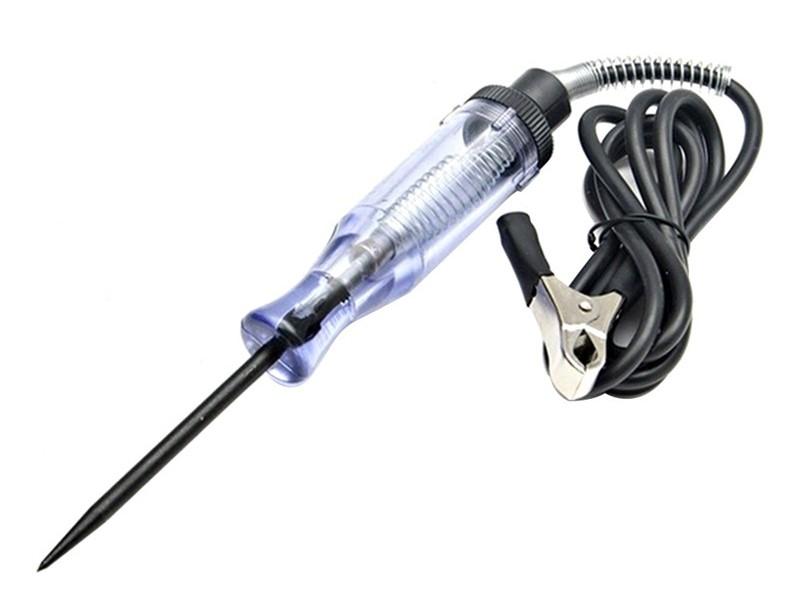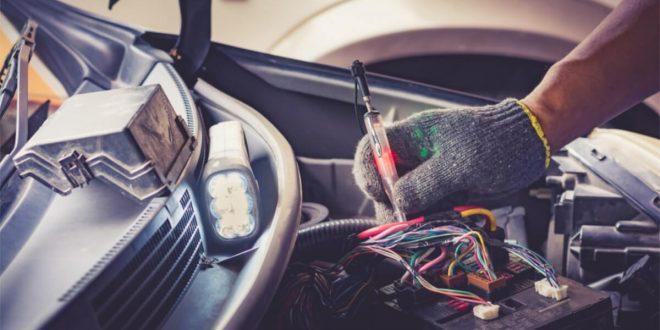How to Use a Test Light on Positive and Ground Wires
There are some simple electronic tools for automobiles that provide quicker results than more advanced tools. Auto test lights are such a simple but useful tool. Also known as a circuit tester or test lamp, it can check the presence or absence of electricity in a circuit. Easy to use, this tool gives quicker results than a digital multimeter. So, how to use a test light?
You can use a test light to check any positive and ground circuits. If a component is showing problems, but the fuse seems fine, this tester can trace the wiring route to pinpoint the source of the trouble.
How to Use a Test Light to Check Positive Voltage
If you want to know how to use a circuit tester on a car in a safe way, follow this guideline. It is a simple and straightforward process that does not require any advanced mechanical skills.
–This procedure is for a 12V vehicle, which means the portable electronics in the vehicle receives power through a 12V socket.

Testing the test light
Well, you have to confirm whether your tool is working fine, right? To find out, clamp it to a ground source such as any metal surface on the car or the negative terminal of the battery.
Press the light’s probe to a power source such as the positive battery cable, a fuse, or the positive battery terminal. The tester is working if the light comes on.
Using the test light
You can use the test light for testing plenty of circuits such as a fuse, alternator, fuel injector, and many other things. You can check a blown fuse without disconnecting it from the fuse box.
The task is more than simple. Find the fuse box, connect the clip part of the test light to a metal part, and probe the fuse with the probing slide. The light will turn on if the fuse is still working.
When a component, like a cooling fan, does not work, the first thing we do is change the fuse. But the problem could be with some other parts.
This test light can ensure whether or not there is power at the fuse. Instead of wasting time on replacing the good fuse, you can move on and check if the switches or control units are the sources of trouble. So, the tool actually quickens the diagnosis of a circuit.
The battery alternator must produce electricity to recharge the battery and supply electricity for a car’s electronics. How do you know if the alternator is doing its job?
A test light makes this job a breeze. If it shows that the alternator’s large terminal has power, you could be sure that the alternator is working fine.
Checking the status of a fuel injector could be another application of this handy tool.
Attach the clamp to the battery’s negative terminal and then out the probing end to the injector circuit’s trigger side. Light will come on if the fuel injector is working.
SEE MORE
How to Use a Test Light for a Ground Circuit
You’ve learned to test the positive voltage with a test light. Sometimes, you may need to test a ground circuit too. Do you know how to do that?
Don’t worry. There’s nothing complicated about this.
To check the ground, you first have to see if the circuit has electricity on the positive side. If yes, move on to examine the grounding point.
Connect the clip end of the test light to the positive end and use the probing point to probe the ground wire of this circuit. An illuminated light indicates that everything is working fine.
In that case, you have to test other parts of that circuit to find the problem.

If the light does not come on, you have to thoroughly examine the ground path. Fixing the grounds is comparatively easier than repairing a positive side.
Check closely the connecting point of the ground wire to see if there is any rust, paint, or something else. Such a thing can act as an insulator and obstruct power flow. Cleaning up that connecting point is likely to solve the issue.
Useful Tips
By now, you may have a clear idea about how to use a test light. If so, these tips will be useful, as these will make the job even easier.
- This tool has two leads that are reversible. It means there is no fixed lead for the positive or the ground wire.
- Most test lights are likely to have a probing end. This feature allows you to examine a circuit without detaching any wire as you can just prick a wire’s plastic insulation with that sharp end.
FAQs on Using a Test Light on Positive and Ground Wires
-
Is it safe to use a test light on live (positive) wires?
Using a test light on live wires can be safe when done correctly. However, it’s essential to exercise caution and follow safety precautions.
Ensure that you have a good ground connection, wear appropriate safety gear, and avoid touching the metal parts of the probe when testing live wires.
-
How can a test light help in diagnosing ground wire problems?
When using a test light on ground wires, it helps identify if a ground wire is properly connected or if there’s a break in the ground circuit. If the test light doesn’t illuminate when connected to a ground wire, it suggests a grounding issue that needs to be addressed.
-
Can using a test light damage electrical components or wires?
When used correctly, a test light should not damage electrical components or wires.
However, if the test light is used improperly, such as connecting it to a high-voltage source or accidentally shorting wires, it can potentially cause damage. Always exercise care and follow proper procedures.
-
Can a test light be used to check the continuity of a wire?
A test light is not typically used to check continuity (whether a wire is unbroken). Instead, a multimeter or continuity tester is more suitable for that purpose. These tools can determine if a wire has a continuous path or if it is broken or disconnected at any point.
-
Can a test light help find parasitic battery drain issues in a vehicle?
A test light can be used to identify parasitic battery drain issues in a vehicle.
By disconnecting the negative battery terminal and placing the test light in series between the disconnected cable and the battery post, you can check if there is an abnormal current draw.
If the test light illuminates brightly, it indicates excessive current draw, which can help pinpoint the source of the drain.
-
Are there any precautions to take when using a test light in a car’s electrical system?
When using a test light in a car’s electrical system, it’s crucial to disconnect the battery’s negative terminal before testing.
This prevents accidental short circuits and ensures safety. Additionally, be cautious when probing wires to avoid damaging delicate electrical components or causing unintended shorts.
Check out this video from JoeCanDoIt to know how to use an automotive test light, a quick and easy process!
Final Words
In conclusion, knowing how to use a test light on positive and ground wires is a valuable skill for diagnosing electrical issues in vehicles. This tool allows you to locate voltage and grounding problems efficiently.
However, always prioritize safety, use insulated tools, and disconnect the battery when necessary.
With these skills, you can save time and money by identifying and addressing electrical problems effectively, ensuring your vehicle’s electrical system functions optimally.














